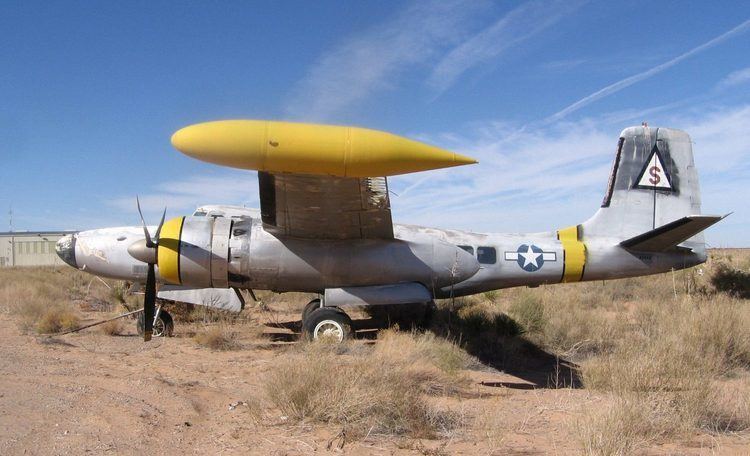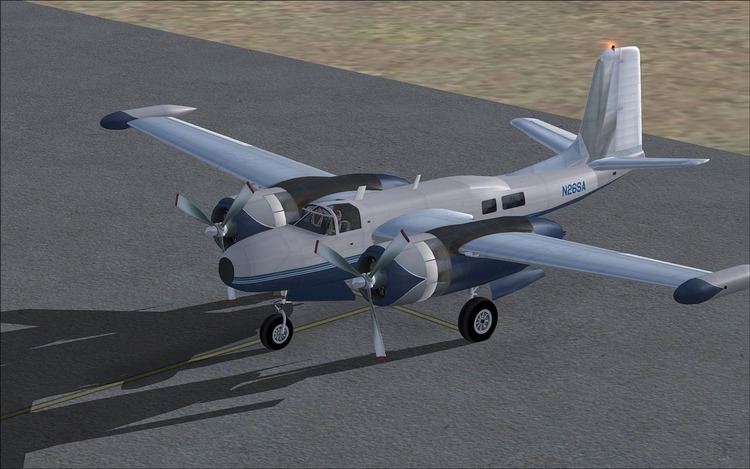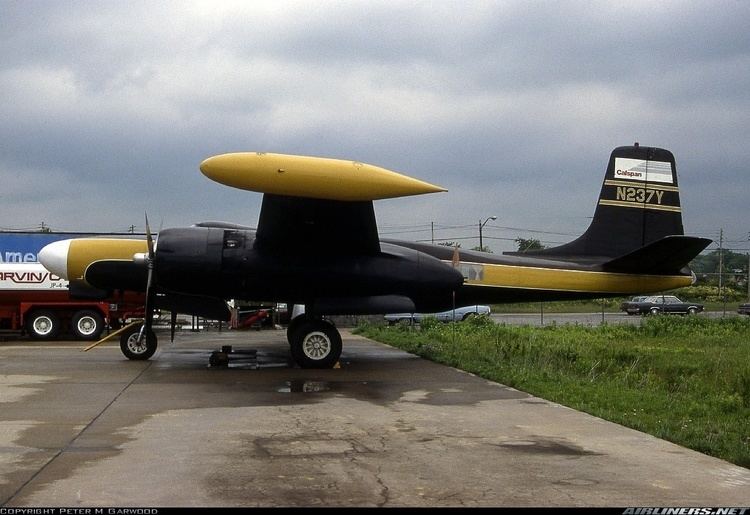Top speed 587 km/h Wingspan 22 m Weight 11,430 kg | Range 4,183 km Length 16 m First flight January 1961 | |
 | ||
Engine type Pratt & Whitney R-2800 Double Wasp | ||
Fsx se p w r 2800 series part 5 douglas on mark marksman
The On Mark Marksman was an American high-speed civil executive aircraft converted from surplus Douglas A-26 Invader airframes by On Mark Engineering. Its antecedents were the On Mark Executive and the On Mark Marketeer.
Contents
- Fsx se p w r 2800 series part 5 douglas on mark marksman
- Development
- Operational history
- Variants
- Survivors
- Specifications Marksman
- References

Development

The On Mark Engineering Company was involved in the maintenance and conversion of Douglas A-26 Invaders for both civil and military customers from 1954 to mid-1970s, The first conversions mainly involved the removal of military equipment and replacement with fairings and civil avionics, sealing of the bomb bay doors, soundproofing, and additional cabin windows. The original "gunner's hatch" was replaced with a larger retractable entrance door, and room for baggage was provided in the nose section. They had improved brake systems and fuel systems and uprated engines with reversible-pitch propellers.

About 1957 the company had developed a major modification that replaced the "carry-through" section of the rear wing spar with a circumferential steel "ring spar" that freed the fuselage space for better passenger accommodation and cockpit access. Other major improvements included a broad-chord metal-skinned rudder, Douglas DC-6 wheels and brakes, an Auxiliary Power Unit, autopilot and additional fuel tanks inside the wing and the addition of wingtip fuel tanks. It also had an extended fiberglass nose for baggage (or a radar) which increased the overall length by about 26".

The typical package of optional improvements was standardized and marketed as the On Mark Executive. One aircraft (registered N40Y) had all the options embodied and was used for development and was renamed in 1957 as the On Mark Marketeer.
Further development continued into the 1960s into what became the On Mark Marksman. The major difference was the addition of full pressurization. Improvements were also made to the cockpit with the incorporation of Douglas DC-6 flat glass windscreens and cockpit side windows. A replacement fuselage roof structure was added from the new windscreens, tapering back to the original tail section. In January 1961 the first Marksman conversion (registered N100Y) was test flown. A Supplementary Type Certificate was issued in January 1961 and deliveries commenced soon after. With the third Marksman conversion (registered N400E), designated the Marksman C, On Mark further altered the upper fuselage by creating a constant interior height to provide a headroom of about 6 ft in the passenger cabin, fitted for six or eight passengers with toilet and galley.
By 1964, six Marksman conversions had been carried out for civil customers, the final seventh and eighth being a special purpose version with terrain-following radar and a cargo-dropping hatch for low level air-drops, designed by and delivered to CIA-associated companies.
Operational history
In April 1967, two On Mark Marksmans were transferred from Intermountain Aviation, an air service related the US Central Intelligence Agency, to Air America, another air service connected to the Agency. The official role of these aircraft as stated in the specifications provided to Air America from Intermountain in March 1967 was "Aerial resupply, [and] low level penetration." Both aircraft had been highly modified with a variety of navigation and other electronic equipment for this role.
Between June and October 1967, the first aircraft, re-registered from N900V to N46598, conducted low level nighttime supply drops to CIA related forces in Laos during the so-called "Secret War". The program was discontinued because the aircraft was too fast for accurate drops even with the special onboard equipment, and looked too much like a type of strike aircraft known to operate in the theater. This was cited as often causing forces on the ground to be wary of turning on their marking lamps. The aircraft was damaged on takeoff at Takhli Royal Thai Air Force Base after being transferred to Overseas Aeromarine, Inc.
The second aircraft, officially re-registered from N800V to N67623, was intended for the same role but never used. Both aircraft were initially painted in Insignia Blue, plus white trim areas outlined with black pinstripe that led the type to be nicknamed "the Blue Goose."
In the end, both aircraft were handed over to the 1198th Operational Evaluation and Training (OT&E) Squadron at Norton Air Force Base, San Bernardino, California, a unit known for alleged participation in agent dropping and other clandestine missions in Southeast Asia (Project Heavy Chain). The Squadron evaluated the two Marksman, but apparently found no use for them and scrapped both aircraft, which suffered from a chronic Invader issue of nose gear failure.
Variants
Survivors
Specifications (Marksman)
Data from
General characteristics
Performance
